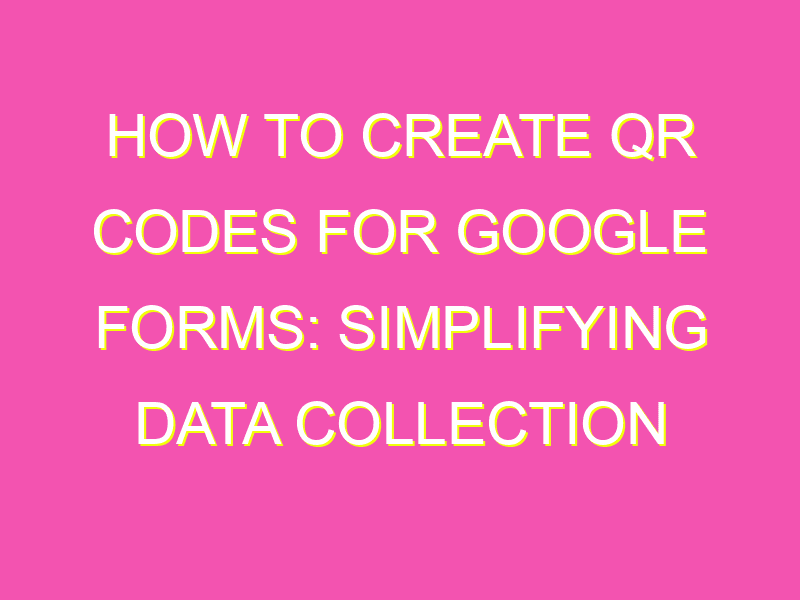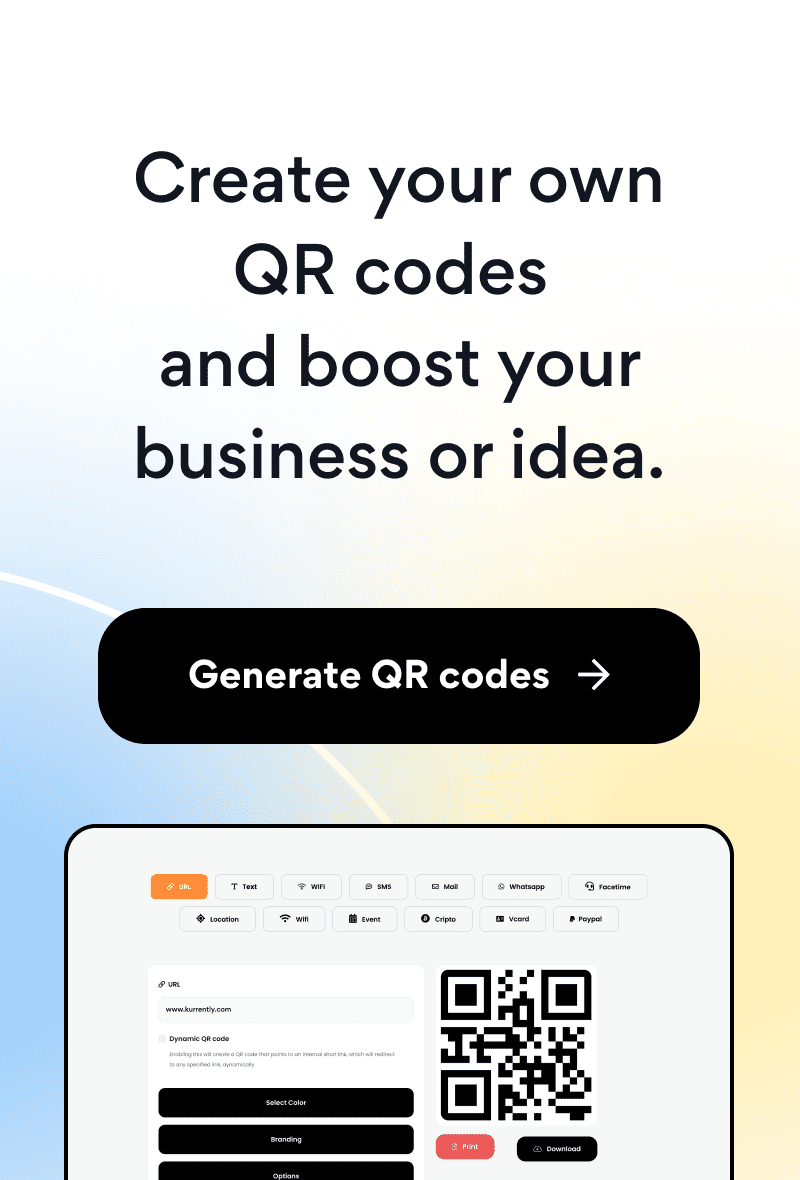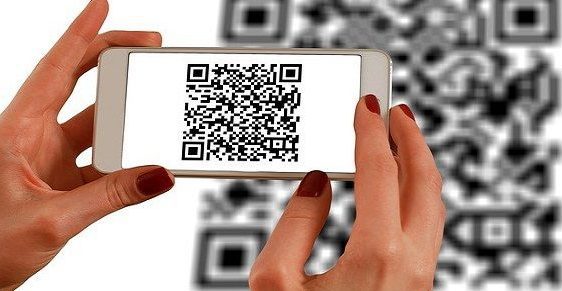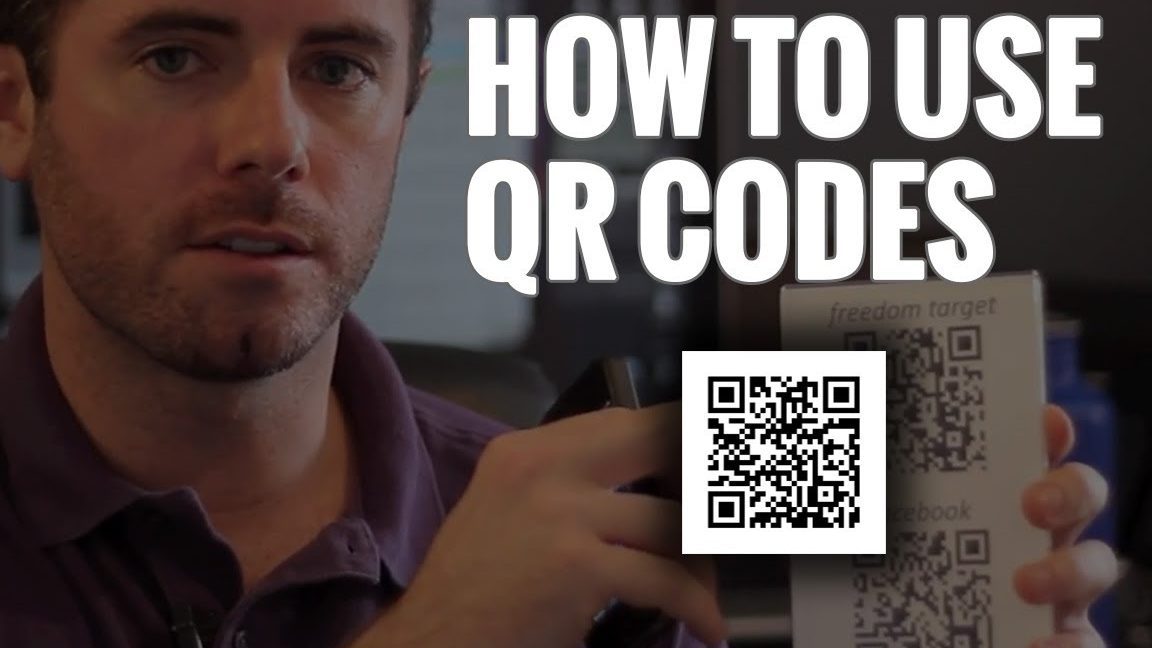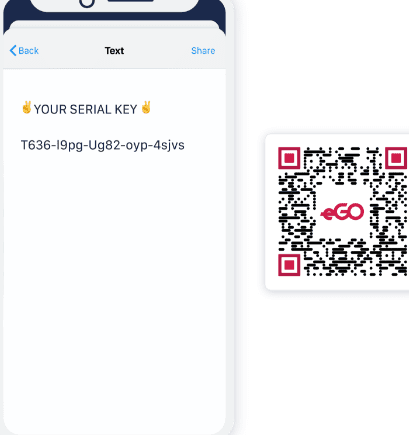Do you want to make it easier for people to access your Google Form? Creating a QR code is the way to go! Follow these simple steps:
In just a few clicks, you can make it easier for people to access your Google Form using their smartphones. So, create a QR code today and share your form like a pro!
Understanding QR Codes and their Significance
QR codes are a type of matrix barcode that consists of black squares arranged on a white background. The main function of these codes is to store large amounts of encoded data that can be easily accessed using a mobile phone or tablet. The use of QR codes has become increasingly popular in the marketing industry as a means of promoting products or services. They can be placed on anything from posters to billboards, and even on digital platforms such as websites and emails.
The significance of QR codes lies in the fact that they provide an effortless way to distribute information. They are particularly useful for collecting and collating data as they can be scanned quickly and easily without the need for manual input. For businesses, QR codes can help to streamline operations by automating information gathering and analysis. They can also help to improve customer engagement by providing a unique and interactive experience.
One of the main benefits of using QR codes is that they are cost-effective and easy to create. All it takes is a free QR code generator and a little bit of creativity to create a code that can be used to promote your business.
Creating a Google Form to Collect Information
Google Forms is a popular tool that can be used to create surveys, questionnaires and feedback forms. It’s particularly useful for businesses as it provides a quick and easy way to gather valuable data. To create a Google form, log in to your Google account, and navigate to Google Forms.
Once you’re on the Google Forms page, click on the “Blank” option to create a new form. You can then start adding questions by selecting different types of form fields such as short answer, long answer, multiple choice, checkboxes, and dropdowns. Once you’ve completed the form, you can preview it by clicking on the “Preview” button.
Generating a QR Code for your Google Form
To generate a QR code for your Google form, you’ll first need to create a shortened URL using a URL shortener. Google’s URL shortener is a great option as it’s free and easy to use. Once you have a shortened URL, navigate to a QR code generator such as “QRCode Monkey” and paste in the URL. You’ll then be able to customize the code by changing the colors, adding an image, and adjusting the size.
Pro tip: Be sure to test your QR code before sending it out to ensure that it works efficiently.
Customizing your QR Code for Aesthetics and Accessibility
Customizing your QR code can go a long way towards making it more appealing and accessible to users. For aesthetic purposes, you can change the colors and add an image or logo that reflects your brand. This helps to create a personalized and memorable experience for your users.
For accessibility purposes, ensure that your QR code is printed at a size that is easily scannable. You should also include instructions on how to scan the code, particularly if it’s your user’s first time using a QR code. Finally, ensure that your QR code is placed in a location that is easily visible and accessible.
Testing and Reviewing your QR Code
Before you distribute your QR code, it’s important to test and review it to ensure that it’s working correctly. Test the code using different mobile devices and ensure that it directs users to the correct location. Additionally, get feedback from a few users to determine how easy it was for them to scan the code.
To review your QR code’s performance, consider using a QR code tracking tool. This tool will provide insights such as the number of scans, the locations of the scans, and the types of devices used.
Sharing and Distributing your QR Code and Google Form
To share and distribute your QR code and Google form, consider placing them on your website, social media pages, email signatures, and marketing materials such as flyers and brochures. Additionally, consider printing and displaying the QR code in physical locations such as retail stores or trade show booths.
Make sure that you communicate clearly the purpose of the form and how it can benefit the user. This will increase the likelihood of users taking the time to scan the code and complete the form.
Analyzing Results and Data Collected from your QR Code
Once you’ve collected data from your Google form, it’s important to analyze and interpret the results to gain insights into your users’ behaviors and preferences. Common metrics to track include survey completion rate, time spent on the survey, and user demographics.
Consider using a data analysis tool such as Google Sheets or Microsoft Excel to further analyze the results. This will help you to identify patterns and trends that can inform future business decisions.
In conclusion, QR codes are a powerful and versatile tool that can help businesses to streamline operations and improve customer engagement. By using Google Forms and a QR code generator, businesses can easily create and distribute forms that can be used for data collection and analysis. Make sure to customize your QR code for aesthetics and accessibility, test it before distribution, and track its performance. Finally, analyze the data collected to gain insights that can inform future business decisions.

